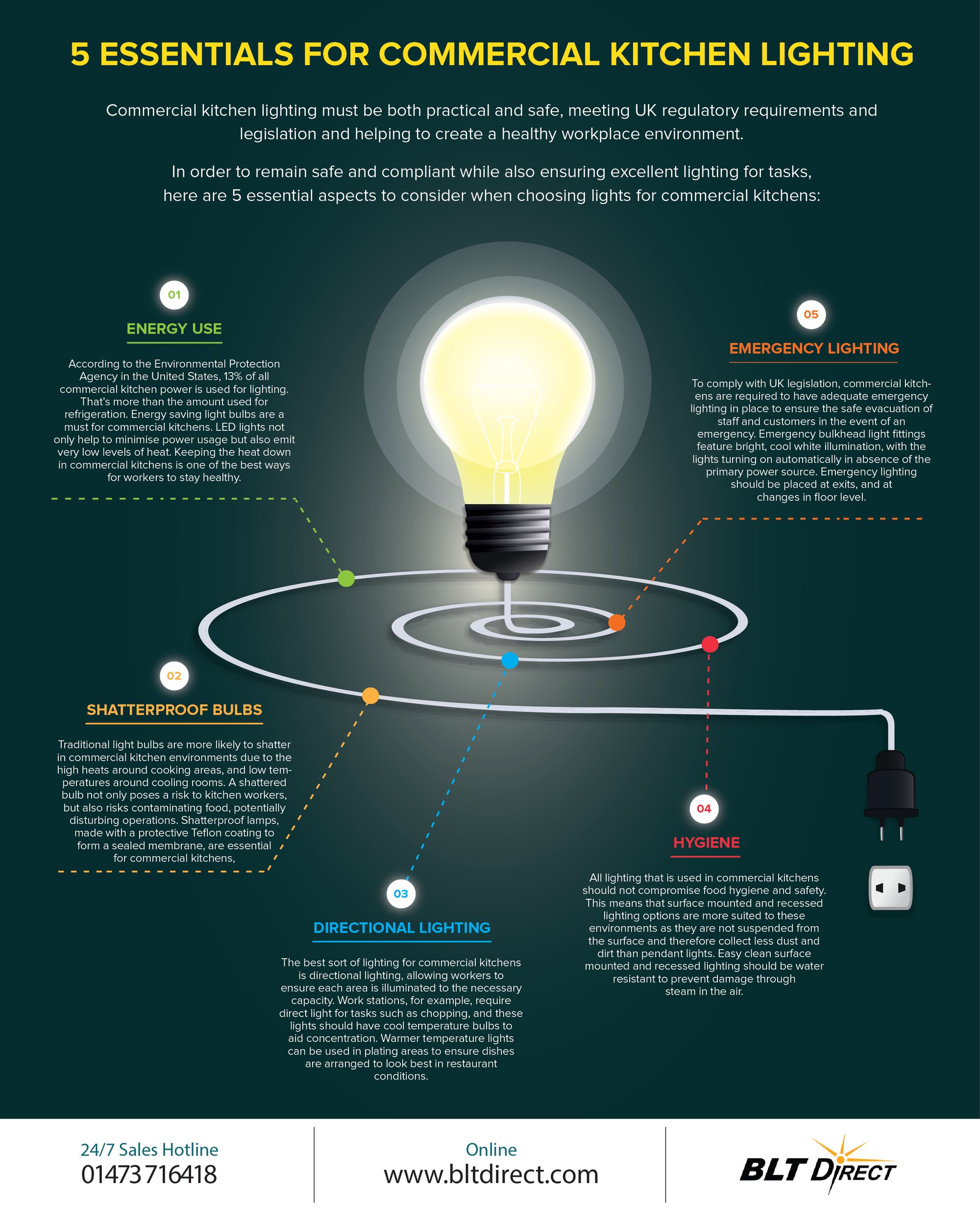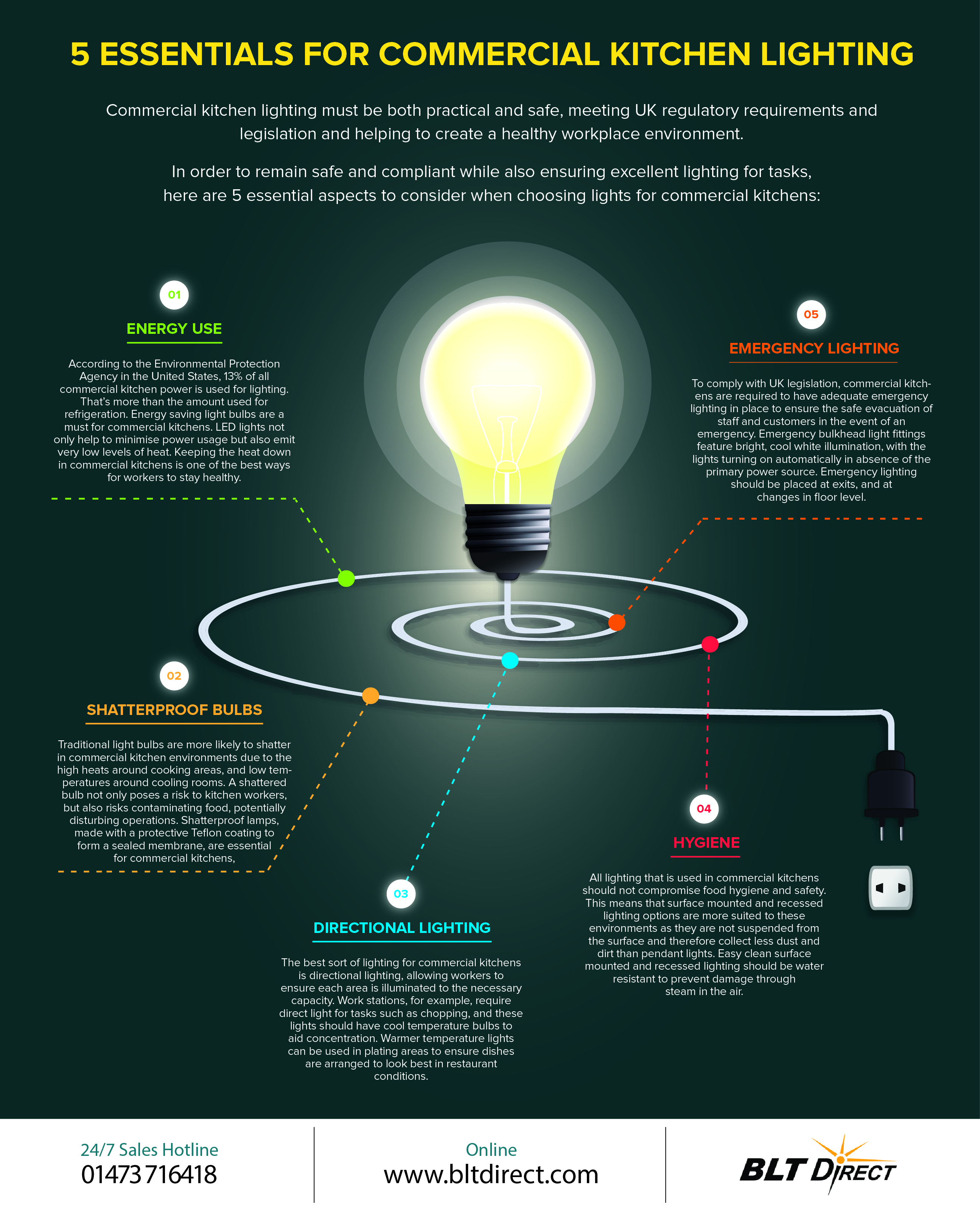Commercial Kitchen Lighting Infographic
In order to remain safe and compliant while also ensuring excellent lighting for tasks, here are 5 essential aspects to consider when choosing lights for...


Commercial kitchen lighting must be both practical and safe, meeting UK regulatory requirements and legislation and helping to create a healthy workplace environment.
In order to remain safe and compliant while also ensuring excellent lighting for tasks, here are 5 essential aspects to consider when choosing lights for commercial kitchens:
Energy Use
According to the Environmental Protection Agency in the United States, 13% of all commercial kitchen power is used for lighting. That’s more than the amount used for refrigeration. Energy saving light bulbs are a must for commercial kitchens. LED lights not only help to minimise power usage but also emit very low levels of heat. Keeping the heat down in commercial kitchens is one of the best ways for workers to stay healthy.
Shatterproof Bulbs
Traditional light bulbs are more likely to shatter in commercial kitchen environments due to the high heats around cooking areas, and low temperatures around cooling rooms. A shattered bulb not only poses a risk to kitchen workers, but also risks contaminating food, potentially disturbing operations. Shatterproof lamps, made with a protective Teflon coating to form a sealed membrane, are essential for commercial kitchens,
Directional Lighting
The best sort of lighting for commercial kitchens is directional lighting, allowing workers to ensure each area is illuminated to the necessary capacity. Work stations, for example, require direct light for tasks such as chopping, and these lights should have cool temperature bulbs to aid concentration. Warmer temperature lights can be used in plating areas to ensure dishes are arranged to look best in restaurant conditions.
Hygiene
All lighting that is used in commercial kitchens should not compromise food hygiene and safety. This means that surface mounted and recessed lighting options are more suited to these environments as they are not suspended from the surface and therefore collect less dust and dirt than pendant lights. Easy clean surface mounted and recessed lighting should be water resistant to prevent damage through steam in the air.
Emergency Lighting
To comply with UK legislation, commercial kitchens are required to have adequate emergency lighting in place to ensure the safe evacuation of staff and customers in the event of an emergency. Emergency bulkhead light fittings feature bright, cool white illumination, with the lights turning on automatically in absence of the primary power source. Emergency lighting should be placed at exits, and at changes in floor level.
